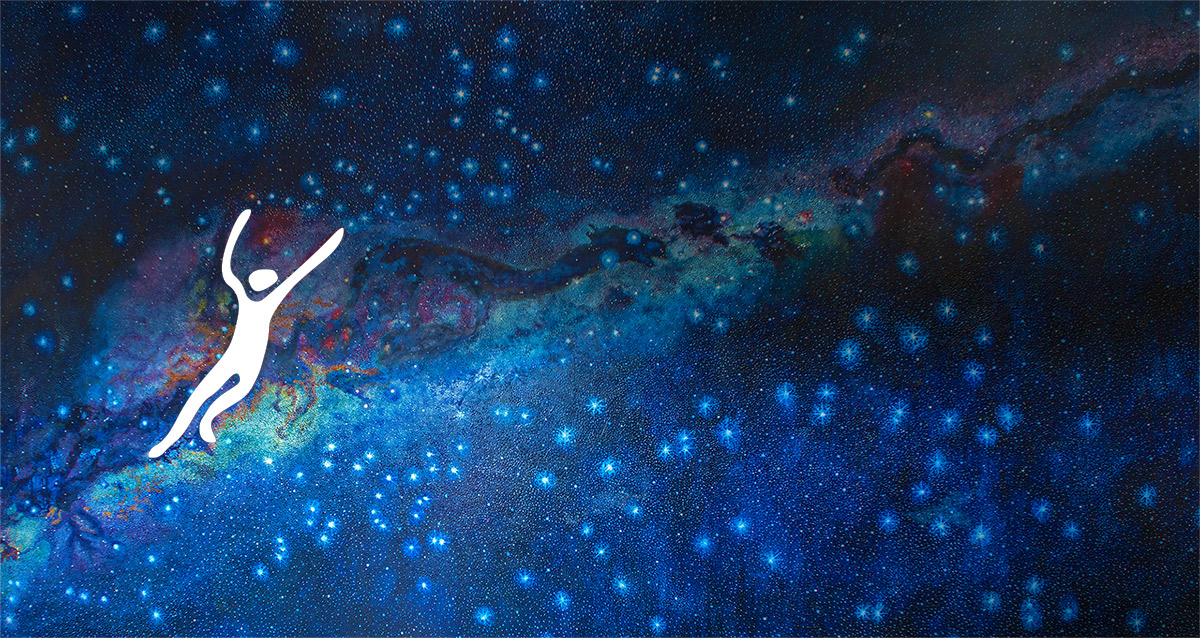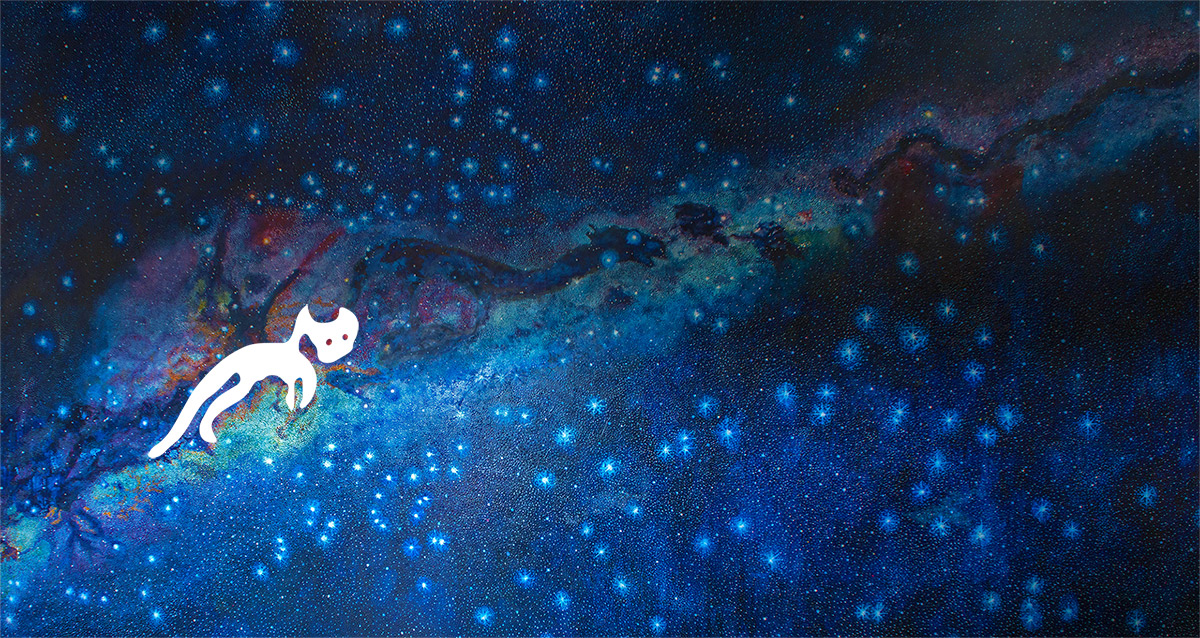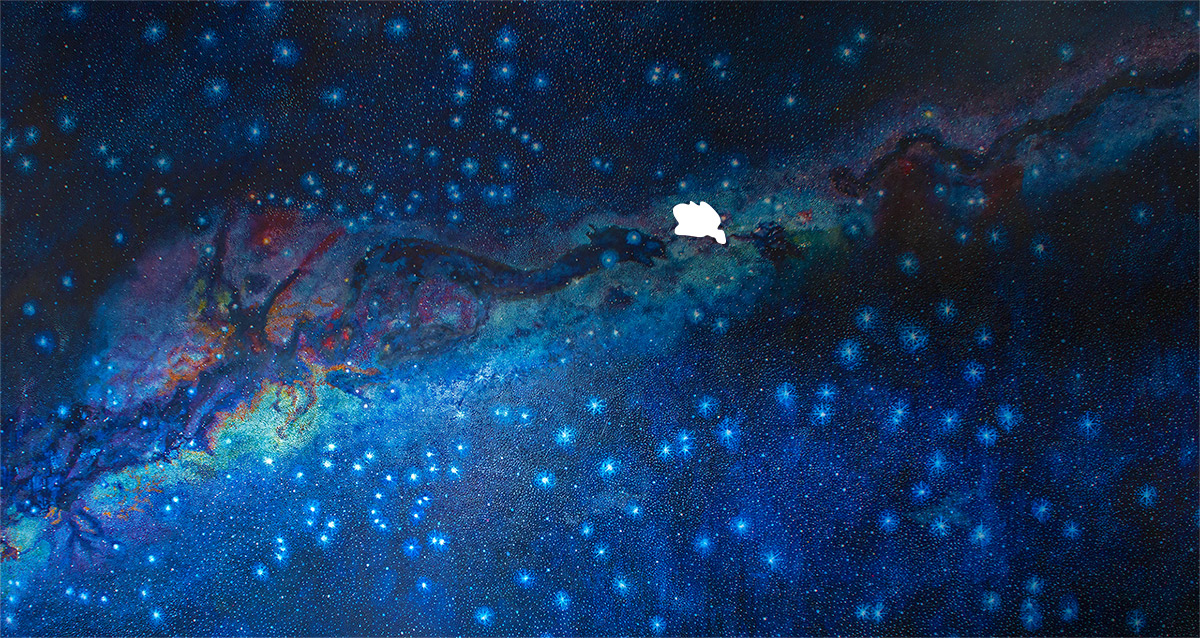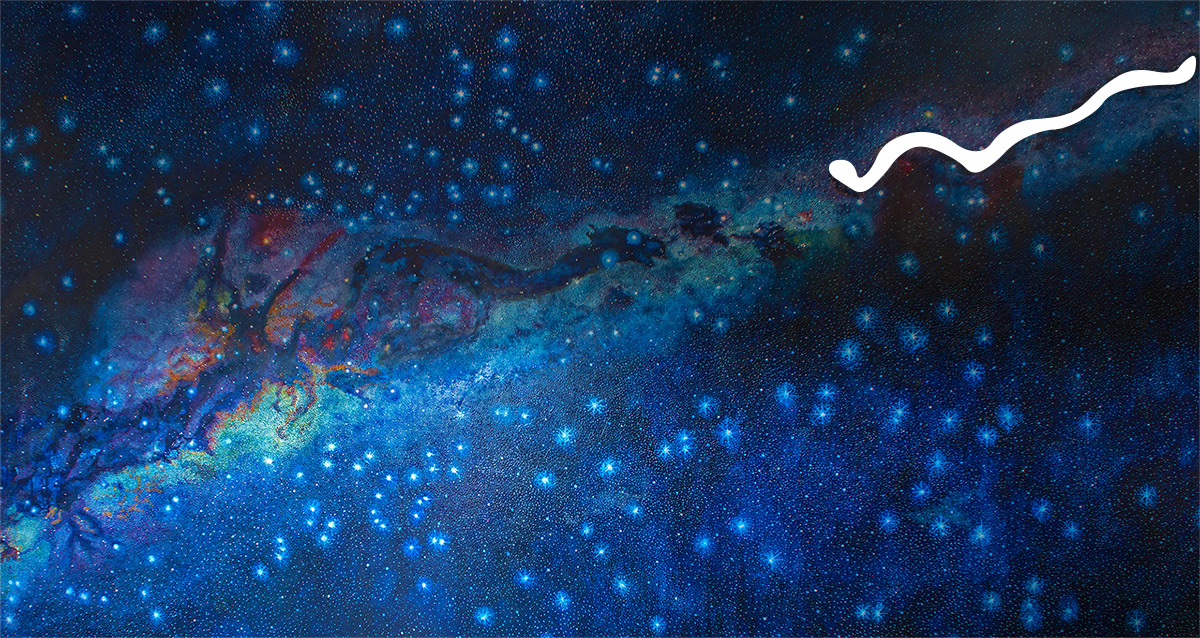Creation Stories
Milky Way—The Road in the Sky
Throughout the Andes, the Milky Way was believed to be a river, Mayu, the source of all water on earth. For the Inka, earth and sky are connected, and the river Mayu mirrors the Qhapaq Ñan. Both are sacred, alive, and parts of one whole.
Many cultures see figures in groupings (constellations) of stars. The Inka often found their constellations in the dark spaces between the stars, known as yana phuyu (dark clouds). In these dark clouds, they saw animals and other things from their daily lives.

-
More
The Milky Way, Painting by Miguel Araoz Cartagena, b. 1977, Oil on canvas, 2014. Photo by Doug McMains, NMAI. Courtesy of the Museo del Convento de Danto Domingo, Cusco, Peru.
This painting by Cusco artist Miguel Araoz Cartegna depicts the Milky Way over Cusco during July and August—the time when the sky is clear and most of the Inka constellations can be easily observed.
Close
Micheq | Shepherd
Many say the shepherd is a woman, since in Andean communities women own the llama flocks while the men take care of them. This shepherd extends her arms towards the llamas, and her legs are close to the paws of the fox.

-
More
The Milky Way, Painting by Miguel Araoz Cartagena, b. 1977, Oil on canvas, 2014. Photo by Doug McMains, NMAI. Courtesy of the Museo del Convento de Danto Domingo, Cusco, Peru.
This painting by Cusco artist Miguel Araoz Cartegna depicts the Milky Way over Cusco during July and August—the time when the sky is clear and most of the Inka constellations can be easily observed.
Close
Atoq | Fox
The fox is found at the feet of the llama as if it were chasing her. Look closely: the celestial llama seems to be kicking the fox. The sun passes through this constellation in December, the time baby foxes are born.

-
More
The Milky Way, Painting by Miguel Araoz Cartagena, b. 1977, Oil on canvas, 2014. Photo by Doug McMains, NMAI. Courtesy of the Museo del Convento de Danto Domingo, Cusco, Peru.
This painting by Cusco artist Miguel Araoz Cartegna depicts the Milky Way over Cusco during July and August—the time when the sky is clear and most of the Inka constellations can be easily observed.
Close
Llamacñawin with Unallamacha | Eye of the llama with baby llama
This was the most important constellation to the Inka. The bright stars Alpha and Beta Centauri serve as the llama's eyes, easily spotted when the constellation rises in November. The constellation consists of two llamas, mother and baby, with the baby below the mother, nursing.

-
More
The Milky Way, Painting by Miguel Araoz Cartagena, b. 1977, Oil on canvas, 2014. Photo by Doug McMains, NMAI. Courtesy of the Museo del Convento de Danto Domingo, Cusco, Peru.
This painting by Cusco artist Miguel Araoz Cartegna depicts the Milky Way over Cusco during July and August—the time when the sky is clear and most of the Inka constellations can be easily observed.
Close
Yutu | Tinamou
The tinamou is a partridge-like bird. In the Inka sky, this kite-shaped constellation seems to pursue the constellation of the toad. (Tinamous eat small frogs and lizards.) It appears in the sky in October and stays until July, its disappearance marking the end of the potato harvest.

-
More
The Milky Way, Painting by Miguel Araoz Cartagena, b. 1977, Oil on canvas, 2014. Photo by Doug McMains, NMAI. Courtesy of the Museo del Convento de Danto Domingo, Cusco, Peru.
This painting by Cusco artist Miguel Araoz Cartegna depicts the Milky Way over Cusco during July and August—the time when the sky is clear and most of the Inka constellations can be easily observed.
Close
Hanp'atu | Toad
The toad was a very important animal for the Inka. They believed that the more toads croaked, the more likely it was that rain would soon begin. The appearance of the toad in the sky meant that it was time to plant.

-
More
The Milky Way, Painting by Miguel Araoz Cartagena, b. 1977, Oil on canvas, 2014. Photo by Doug McMains, NMAI. Courtesy of the Museo del Convento de Danto Domingo, Cusco, Peru.
This painting by Cusco artist Miguel Araoz Cartegna depicts the Milky Way over Cusco during July and August—the time when the sky is clear and most of the Inka constellations can be easily observed.
Close
Mach'acuay | Serpent
Mach'acuay was said to oversee all snakes on Earth. This constellation emerges head-first in August and begins to set in February, which matches the activity of real snakes in the Andes.